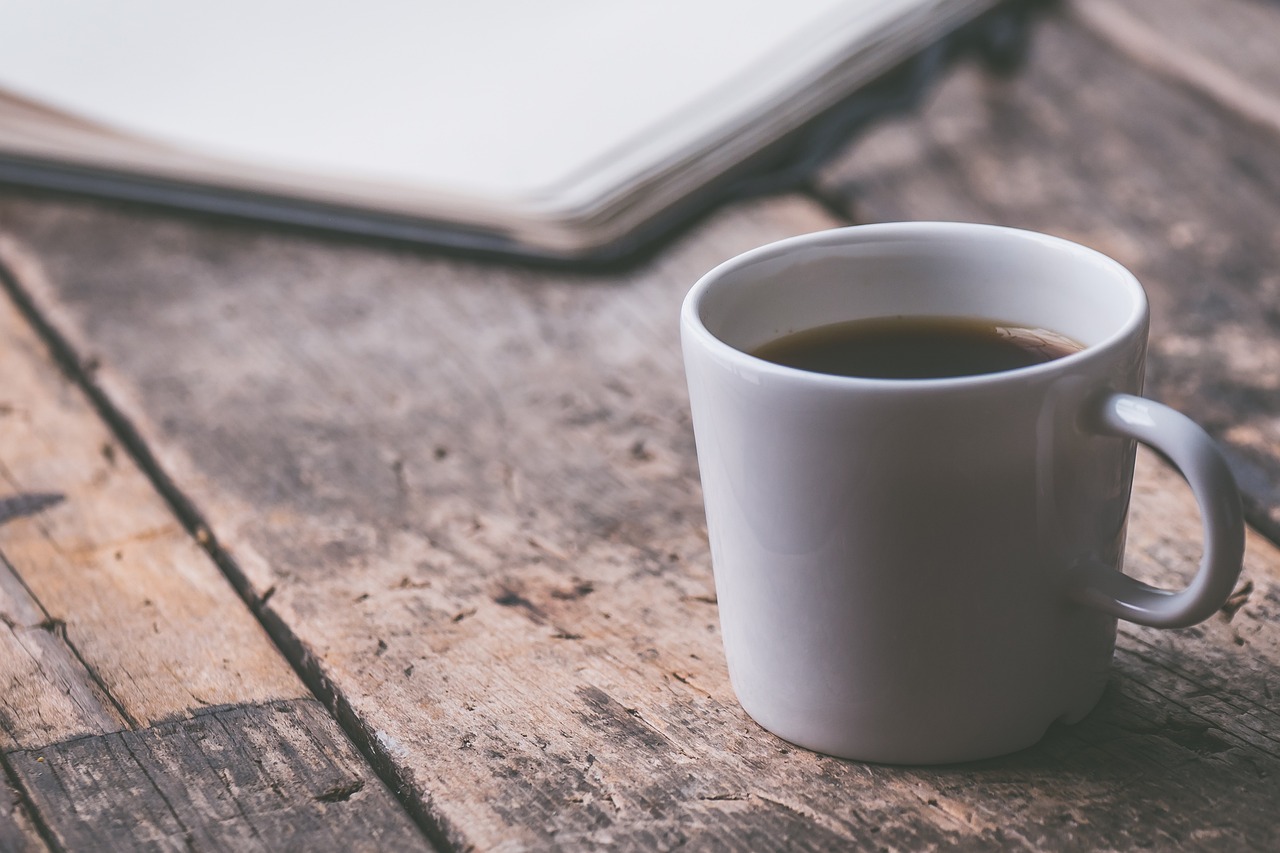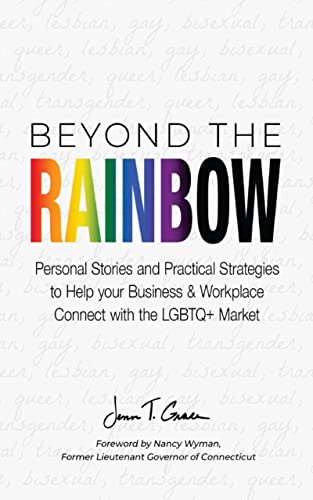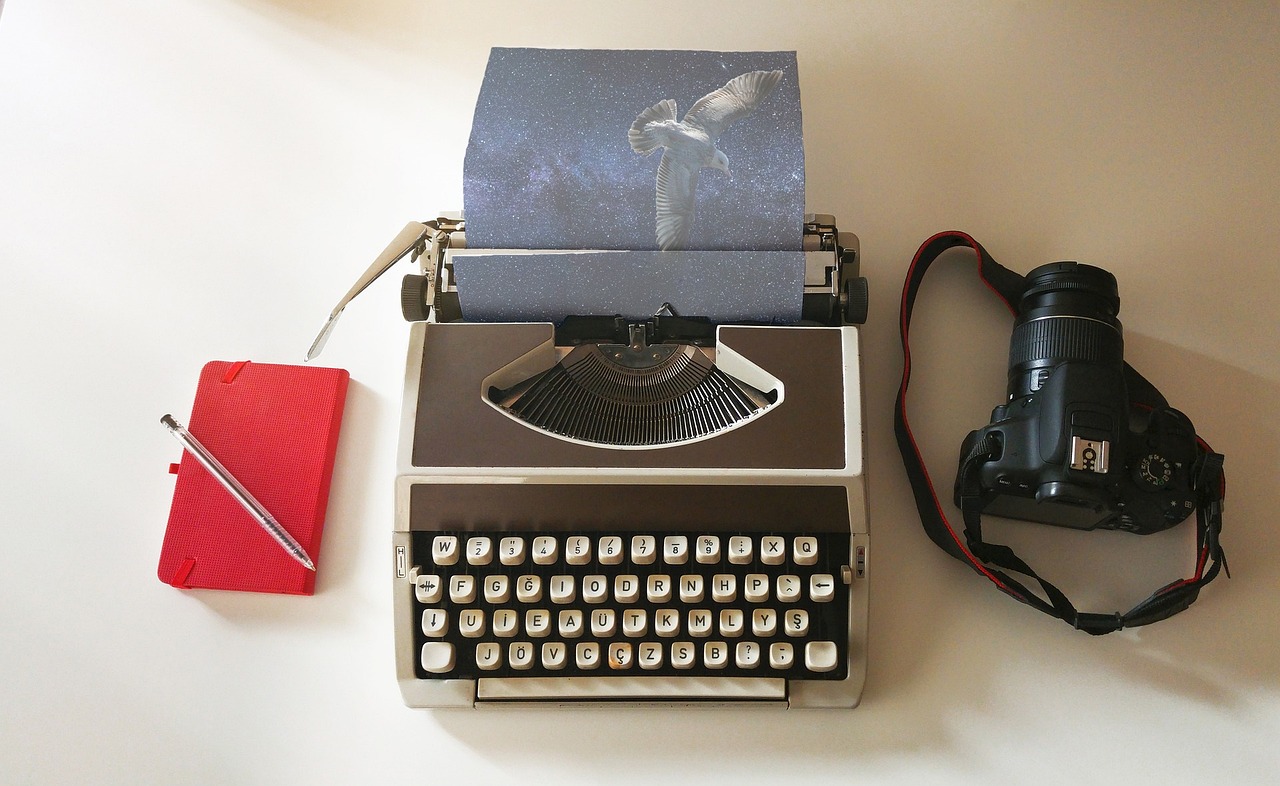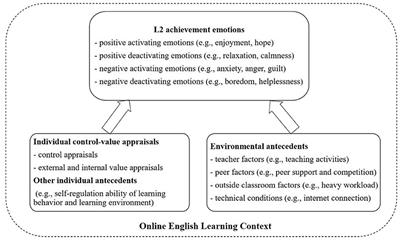Table of Contents
Scrapbooking is a beautiful art form that allows us to preserve cherished memories, but it’s more than just arranging photographs and decorative elements on a page. It’s about capturing the essence of those moments, the emotions and the personal stories that make them truly special. One of the most powerful tools at your disposal for this purpose is journaling. In this article, we will explore the art of journaling in scrapbooking and how it can enrich your pages with personal stories and meaning.
Scrapbooking is a beautiful art form that allows us to preserve cherished memories, but it’s more than just arranging photographs and decorative elements on a page. It’s about capturing the essence of those moments, the emotions and the personal stories that make them truly special. One of the most powerful tools at your disposal for this purpose is journaling. In this article, we will explore the art of journaling in scrapbooking and how it can enrich your pages with personal stories and meaning.
At its core, scrapbooking is an endeavor to freeze time, to encapsulate the magic of fleeting moments and preserve them in a tangible and creative way. However, photographs alone can’t always convey the depth of what we felt or experienced in those instances. This is where journaling steps in as the unsung hero of scrapbooking. It breathes life into the images, providing context and emotion, like a secret dialogue between your past and present selves.
When you begin to journal in your scrapbooks, you embark on a journey of self-expression. It’s a chance to share your thoughts, reflections and anecdotes that might not be evident from a mere photograph. It’s an opportunity to let your unique voice shine, weaving a narrative that transforms your scrapbook into a vivid, personal storybook.
Think of journaling as the glue that binds together the elements of your scrapbook. It’s more than just words; it’s a bridge between your memories and the physical artifacts you’ve collected. Through journaling, you can explain the significance of a particular photo, describe the emotions you felt that day or recount the humorous anecdotes behind the scenes. It allows you to capture the essence of the moment and invite others into your world, helping them connect with the memory on a deeper level.
Moreover, journaling in scrapbooking is a form of therapy and self-reflection. It encourages you to revisit these memories and ponder how they have shaped you over time. You can share life lessons learned, personal growth experienced or simply express gratitude for the beautiful moments life has gifted you. This introspective aspect of journaling is a valuable process in itself, fostering mindfulness and helping you appreciate the journey you’ve embarked upon.
As you experiment with journaling in your scrapbooks, don’t feel confined by traditional formats or structures. There’s no right or wrong way to journal; it’s a highly personal endeavor. You can write prose, pen poetry or jot down a stream of consciousness. You can use calligraphy, colorful markers or stickers to make your words visually appealing. The goal is to make your journaling style uniquely yours.
In conclusion, journaling in scrapbooking is an art form that elevates your pages from mere collections of photographs to captivating narratives filled with the essence of your memories. It’s a creative, therapeutic and deeply personal process that not only enriches your scrapbooks but also helps you appreciate the beauty of the moments you’ve lived. So, pick up your pen, let your thoughts flow and watch as your scrapbooks come alive with the stories that truly matter – your own.
To expand your knowledge on this subject, make sure to read on at this location: Introduction to Digital Scrapbooking (Self-Paced Tutorial) | KCSD …
The Heart of Scrapbooking
At its core, scrapbooking is a storytelling medium. It’s about more than just showcasing your photos; it’s about conveying the emotions, thoughts and memories that accompany them. Journaling is the written component that breathes life into your layouts, helping you tell the story behind each image.
At the heart of scrapbooking lies a captivating and deeply personal art form—the art of storytelling. It transcends the mere act of showcasing photographs; it’s a profound journey of conveying the intricate tapestry of emotions, thoughts and memories that accompany those images. Journaling, as the written component of scrapbooking, plays a pivotal role in infusing your layouts with depth, meaning and a timeless narrative.
Emotional Resonance: Each photograph captures a single moment frozen in time, but it is through journaling that you breathe life into that moment. It allows you to delve into the emotions that were present when the picture was taken—the joy of a celebration, the warmth of a family gathering or the nostalgia of a bygone era. Your words serve as a bridge, connecting the viewer to the feelings you experienced.
Context and Details: Journaling provides the context and details that might otherwise remain hidden in a photograph. It answers the questions of who, what, where, when and why, offering a comprehensive understanding of the memory being depicted. It’s a treasure trove of information that future generations can turn to for insights into your life.
Personal Perspective: Your journaling is your voice on the page—a reflection of your unique perspective, memories and insights. It adds a layer of authenticity and personalization to your scrapbook that distinguishes it from any other. Your words capture the essence of your individual experiences and the significance of the moment.
A Journey Through Time: Over the years, your scrapbook becomes a time capsule and journaling is the key to unlocking its contents. When you revisit your pages, your words transport you back in time, allowing you to relive the events, people and emotions associated with each memory. It’s a remarkable journey through the chapters of your life.
Connecting Generations: Scrapbooking with thoughtful journaling is a way to bridge generational gaps. It enables you to share your life story with descendants who may never have had the chance to know you personally. Your words offer a connection to your past, fostering a sense of continuity and heritage.
Thematic Storytelling: Depending on the theme of your scrapbook, journaling can take on different forms. It might include narratives, anecdotes, quotes, poems or even letters. These creative approaches enhance the storytelling aspect and align with the overall mood and style of your project.
Self-Reflection and Catharsis: Beyond sharing your story with others, journaling can also serve as a form of self-reflection and catharsis. Writing about your experiences allows you to process emotions, gain insights and find closure when needed. It’s a therapeutic outlet for self-expression.
Preserving Memories: Journaling ensures that your memories are preserved in more than just images. It safeguards the stories, sentiments and historical context that give life to those photos. Your words become a testament to the richness of your life’s journey.
In essence, scrapbooking is a celebration of life’s moments and journaling is the eloquent voice that narrates the tale. It weaves together the threads of time, emotion and experience, creating a tapestry of memories that not only immortalizes the past but also invites the present and future to join in the storytelling. So, with pen in hand, embark on your scrapbooking adventure and let your words become the legacy that generations will cherish and treasure.
For additional details, consider exploring the related content available here 7 Strategies for Anxiety-Free Scrapbook Journaling – Simple Scrapper

Traditional Journaling
This involves writing a narrative or description of the events, people and emotions depicted in your photographs. It provides context and personal insights, helping the viewer connect with the moment.
Expanding on the idea of writing a narrative or description of the events, people and emotions depicted in your photographs, let’s delve deeper into how this enriches your scrapbooking experience:
1. Capturing the Essence of the Moment: When you craft a narrative around your photographs, you’re not just documenting what’s visible in the picture. You’re capturing the essence of the moment – the laughter, the tears, the surprise and the joy. By describing the emotions and reactions of the people involved, you transport the viewer back in time and make them feel like they were right there with you.
2. Immortalizing Memories: Memories are fleeting, but a well-crafted narrative serves as a timeless record. It immortalizes the experiences, ensuring that they remain vivid and tangible, even as the years pass. Whether it’s a candid family moment or a significant life event, your words give these memories a lasting presence.
3. Strengthening Personal Connections: Scrapbooks are often shared with loved ones, friends and future generations. When you provide context and personal insights through your narrative, you strengthen the emotional connection your viewers have with the photos. They not only see the image but also understand the significance and the stories behind it, forging a deeper bond.
4. Documenting Milestones and Growth: Your journaling can also serve as a growth tracker. By reflecting on how events and people have evolved over time, you create a historical record of personal and collective growth. This can be particularly powerful when documenting family journeys, graduations or anniversaries.
5. Honoring the Unsung Heroes: Many times, the unsung heroes of a moment go unnoticed in photographs. Your narrative allows you to shine a spotlight on these individuals, sharing their contributions, thoughts or feelings during the event. It’s a way to pay tribute to those who might otherwise be overlooked.
6. Fostering Creativity: Writing narratives for your scrapbook encourages creative expression. It’s an opportunity to experiment with storytelling techniques, like suspense, humor or introspection. You can infuse your words with your unique style, making your scrapbook pages even more personalized.
7. Therapeutic and Reflective: Beyond the joy of creating beautiful pages, journaling can be therapeutic. It allows you to process your own emotions, thoughts and reflections about the events you’re documenting. It’s a form of self-expression that can be healing and cathartic.
Incorporating narratives into your scrapbooking isn’t just about annotating photos; it’s about breathing life into your pages. Each word you choose serves as a brushstroke on the canvas of your memory, painting a richer and more profound picture for you and your viewers to cherish. So, as you craft your scrapbook layouts, remember that your narratives are the threads that weave together the tapestry of your unique and beautiful life story.
Additionally, you can find further information on this topic by visiting this page: Scrapbooking ≠ Journaling [Might be controversial] : r/Journaling

Captioning
Short and sweet, captions are perfect for adding quick notes, dates and locations to your scrapbook pages. They provide essential information and context.
Captions in scrapbooking are like the brushstrokes of a storyteller, adding depth and context to your visual narrative. While they may be short and sweet, these concise notes serve as essential signposts, guiding viewers through the pages of your scrapbook. Here’s a closer look at the significance of captions and how they contribute to your creative journey:
1. Contextual Clarity: Captions offer a glimpse into the who, what, when and where of your photos and mementos. They provide the necessary context that bridges the gap between the visual elements on the page and the story behind them. With a quick glance at a well-crafted caption, viewers instantly grasp the significance of the moment.
2. Timeless Documentation: Beyond their role in storytelling, captions serve as invaluable documentation. They record the dates, locations and even the names of individuals captured in the photographs. This documentation ensures that the memories preserved in your scrapbook remain vivid and accurate, allowing future generations to connect with the past.
3. Personal Touch: Captions also offer an opportunity to infuse a personal touch into your scrapbook. While they convey factual information, they can also include your reflections, sentiments and anecdotes related to the photos or keepsakes. This personal narrative adds warmth and authenticity to your pages, making them more relatable and engaging.
4. Theme Reinforcement: Depending on the theme of your scrapbook, captions can play a pivotal role in reinforcing the overarching narrative. Whether you’re creating a travel journal, a family history album or a special occasion scrapbook, captions help emphasize the theme and guide the viewer’s interpretation of the content.
5. Creative Expression: Captions provide a canvas for creative expression. You can experiment with different fonts, styles and layouts to match the overall aesthetic of your scrapbook. Using decorative elements like stickers, stamps or hand-drawn embellishments, you can transform captions into visually appealing features on your pages.
6. Organization and Flow: Captions contribute to the overall organization and flow of your scrapbook. Placed strategically near the corresponding photos or mementos, they create a logical sequence that guides readers through the narrative. Well-structured captions enhance the reading experience and make your scrapbook more accessible.
7. Story Enhancement: While captions may appear concise, they have the power to enhance the storytelling aspect of your scrapbook. By capturing the essence of a moment or sharing a brief anecdote, captions breathe life into your visuals. They evoke emotions, prompt memories and invite viewers to connect with the stories you’re telling.
8. Accessibility: Captions also serve a practical purpose in making your scrapbook accessible to everyone, including those who may not be familiar with the events or individuals featured. They ensure that viewers can fully appreciate and understand the significance of each page, regardless of their prior knowledge.
In essence, captions are the bridge that connects the visual and textual elements of your scrapbook, creating a harmonious fusion of storytelling and documentation. They transform your pages into a comprehensive narrative, where memories come to life and the essence of each moment is preserved. Short and sweet as they may be, captions are the key to unlocking the true potential of your scrapbook, transforming it into a timeless treasure trove of cherished memories and stories.
Don’t stop here; you can continue your exploration by following this link for more details: 10+ Tips on How to Scrapbook Like a Pro — Root & Branch Paper Co.

Letter Writing
Imagine you’re writing a letter to a friend or family member about the event or memory you’re documenting. This approach can infuse warmth and intimacy into your journaling.
Imagine that your scrapbook is not just a collection of photographs and decorations but a heartfelt letter to a dear friend or cherished family member. This perspective transforms the act of journaling into a deeply personal and emotional connection with your memories, infusing warmth and intimacy into your pages.
As you sit down to capture the essence of the event or memory, picture yourself sharing the story with your loved one. Let your words flow as if you were conversing with them, recounting the details, emotions and significance of the moment. This approach transcends mere documentation; it becomes a heartfelt narrative, a conversation that bridges time and distance.
In this letter-like journaling, you have the freedom to express your feelings openly and authentically. You can convey the excitement of a milestone, the nostalgia of a cherished memory or the warmth of a special gathering. Your words become a vehicle for reliving the experience, not just for yourself but also for the person who will eventually turn the pages of your scrapbook.
Think about the little anecdotes and inside jokes that you would share with your friend or family member over a cup of tea or coffee. Include those in your journaling to create an intimate connection between the reader and the memory. These personal touches add depth and character to your storytelling, making it feel as though you are right there, recounting the story in person.
Consider addressing the recipient directly in your journaling. Use phrases like, “Dear [Name],” or “I wish you could have been there with us.” This direct address adds a touch of authenticity and makes it clear that your scrapbook is not just a collection of images but a personal communication from your heart to theirs.
Furthermore, don’t be afraid to let your emotions shine through your words. If a particular memory brings tears of joy or a wistful smile to your face, express those feelings in your journaling. Emotions are an integral part of our memories and sharing them with your loved one through your scrapbook creates a genuine and touching connection.
Incorporating this letter-writing approach into your journaling not only adds a layer of authenticity and warmth to your scrapbook but also ensures that your memories are not just frozen in time but come alive with each turn of the page. Your scrapbook becomes a heartfelt gift, a piece of your heart shared with someone you hold dear and a lasting testament to the power of preserving memories with love and intention.
Looking for more insights? You’ll find them right here in our extended coverage: Montgomery County – Scrapbook Journaling

Quotes and Poems
Sometimes, a well-chosen quote or poem can encapsulate the essence of your page. It can express feelings and sentiments that resonate with you and your readers.
Words That Echo: The Power of Quotes and Poems in Scrapbooking
In the intricate art of scrapbooking, where images and memories blend seamlessly, there’s a profound magic that words bring to the mix. A well-chosen quote or poem, carefully selected like a cherished gem, has the remarkable ability to encapsulate the very essence of your page. It’s a window to the soul of your creation, expressing feelings and sentiments that resonate not only with you but with those who glimpse into your scrapbook. Let’s delve into the enchanting world of incorporating quotes and poems, where words become a bridge between your heart and the hearts of others.
1. Emotion in a Few Lines:
- Quotes and poems are condensed emotion. In just a few lines, they can convey the depth of love, the joy of celebration or the bittersweet nostalgia of a moment gone by. They add a layer of emotional resonance to your pages that images alone may not fully capture.
2. Amplifying Themes:
- Whether you’re crafting a themed scrapbook or celebrating a specific occasion, quotes and poems are versatile tools. They can underscore the theme, serving as thematic anchors that reinforce the message you want to convey.
3. Personal Expression:
- The beauty of choosing your own quotes or poems lies in the personal touch they bring to your scrapbook. It’s an opportunity to share your thoughts, your interpretations and your unique perspective on the moments you’re preserving.
4. Universal Appeal:
- Words have a universal appeal. They can resonate with anyone who reads them, transcending cultural or linguistic boundaries. A well-chosen quote or poem can connect with your readers on a profound level, making your scrapbook accessible and relatable.
5. Adding Context:
- Sometimes, a quote or poem can provide context or backstory to a particular photo or moment. It’s like adding a caption that goes beyond describing what’s in the image, instead delving into the emotions and thoughts behind it.
6. Sparking Conversation:
- Quotes and poems can be conversation starters. They invite those who peruse your scrapbook to share their own thoughts and reflections, fostering a deeper connection and dialogue.
7. Complementary Design:
- Beyond their emotional impact, quotes and poems can be integrated into your scrapbook design. They can serve as decorative elements, enhancing the overall visual appeal of your pages.
8. Versatility in Presentation:
- There are countless ways to incorporate quotes and poems into your scrapbook. You can handwrite them for a personal touch, use decorative fonts or even create custom embellishments that feature your chosen words.
9. Quotes for Every Occasion:
- Whether you’re celebrating a wedding, a graduation, a birth or simply the beauty of everyday life, there’s a vast repository of quotes and poems for every occasion. These words become your partners in storytelling.
In conclusion, quotes and poems are the lyrical threads that weave your scrapbook’s narrative together. They infuse emotion, depth and meaning into your pages, ensuring that your memories are not just seen but felt. As you embark on your scrapbooking journey, remember that the beauty of words lies in their ability to transcend time, making your cherished moments eternally eloquent and deeply cherished.
Don’t stop here; you can continue your exploration by following this link for more details: 11 Scrapbooking Journaling Tips for Beginners

Creative Journaling
Experiment with different fonts, colors and formatting to make your journaling visually engaging. Incorporate doodles, sketches or calligraphy for a more artistic touch.
Elevate Your Journaling: The Art of Visual Expression
Journaling is not just about words; it’s a canvas for your thoughts and emotions. To take your journaling to the next level and truly immerse yourself in the art of expression, embrace the creative potential of fonts, colors and formatting. Unleash your inner artist and experiment with various visual elements like doodles, sketches and calligraphy to transform your journal into a captivating visual and emotional journey.
**1. Typography as a Tool: Fonts are more than just letters; they’re tools for conveying emotion and tone. Experiment with different fonts to match the mood of your journal entries. Use bold, playful fonts for moments of joy and excitement, while elegant, flowing scripts can convey a sense of calm or reflection.
**2. Colors That Speak: Colors have the remarkable ability to evoke emotions and memories. Harness the power of colors in your journaling. Select hues that resonate with the feelings or experiences you wish to capture. Warm, vibrant colors can infuse energy into your pages, while cool, muted tones create a sense of tranquility.
**3. Formatting for Impact: Formatting isn’t just about neatness; it’s a means of guiding the reader’s eye and emphasizing key points. Experiment with formatting techniques like bullet points, headings and text alignment to structure your thoughts and make your journaling more reader-friendly and impactful.
**4. Doodling for Expression: Doodling isn’t just for kids; it’s a creative outlet that can add a whimsical touch to your journal. Incorporate simple doodles or intricate drawings to illustrate your thoughts and emotions. Doodles can serve as visual metaphors, conveying ideas that words alone might struggle to capture.
**5. Sketch Your Moments: If you’re artistically inclined, consider sketching scenes or objects related to your journal entries. Sketching adds a personal and authentic dimension to your journal, turning it into a visual diary of your experiences. Even if you’re not a professional artist, the act of sketching can be therapeutic and meditative.
**6. Calligraphy as an Art Form: Calligraphy is a beautiful way to infuse elegance and sophistication into your journaling. Invest in quality calligraphy pens or brushes and practice different calligraphic styles. Elegant calligraphy can turn even the simplest journal entries into works of art.
**7. Collage Your Emotions: Collages are a wonderful way to visually represent a cluster of thoughts, feelings or memories. Cut out images, words or phrases from magazines, photographs or printed materials that resonate with your journal entries. Collages can convey complexity and depth with a single glance.
**8. Mixed Media Magic: For the most adventurous journalers, explore mixed media techniques. Combine watercolors, acrylics, washi tape and found objects to create multi-dimensional, tactile journal entries. Mixed media allows you to merge your artistic instincts with your journaling, resulting in truly unique pages.
Incorporating these visual elements into your journaling not only makes it visually engaging but also enhances your self-expression. It transforms your journal from a mere record of events into a vivid tapestry of thoughts, emotions and artistic exploration. So, don’t hesitate to experiment, to play with fonts and colors and to let your creativity flow as you embark on a journey of visual journaling that is uniquely your own.
For a comprehensive look at this subject, we invite you to read more on this dedicated page: Introduction to Digital Scrapbooking (Self-Paced Tutorial) | Spoon …

The Power of Personal Stories
Journaling allows you to share the personal stories and emotions behind your photos. Here’s why it’s so important:
Journaling is the heart and soul of your scrapbook, the secret ingredient that takes a collection of photographs and transforms them into a meaningful and deeply personal narrative. It’s the bridge that connects the visual elements to the rich tapestry of your thoughts, feelings and memories. Let’s explore why journaling is not just important but essential to the art of scrapbooking.
Context and Storytelling: Journaling provides the context that brings your photos to life. While a picture is worth a thousand words, those words can provide vital information. They tell the who, what, when, where and why of each moment captured in your album. It’s through journaling that you can tell the story behind the smiles, tears and laughter, creating a comprehensive and engaging narrative.
Emotional Expression: Your journaling allows you to express the emotions that accompany the moments you’ve captured. Whether it’s the excitement of a graduation, the nostalgia of a family gathering or the love shared on a wedding day, journaling enables you to convey the depth of your feelings. These emotional insights connect viewers on a profound level, allowing them to share in your joy, sorrow or celebration.
Personal Reflection: Journaling is a form of personal reflection. It provides you with an opportunity to pause and consider the significance of each photo, memory and experience. As you write, you might uncover new layers of understanding, gratitude or personal growth. This introspection enriches not only your scrapbook but also your own sense of self.
Legacy and Connection: A well-journaled scrapbook is a legacy you leave for future generations. It offers them a glimpse into your life, your relationships and the history of your family. When your descendants flip through the pages, they can hear your voice, understand your perspective and feel a profound connection to their heritage. Journaling creates a timeless bond that transcends generations.
Catharsis and Healing: For some, journaling within a scrapbook can be a form of catharsis and emotional healing. It provides an outlet to express and process complex feelings, whether related to a challenging experience or a moment of personal growth. The act of journaling can be therapeutic, helping you find closure, peace or inspiration.
Creative Expression: Journaling is not just about words; it’s also a creative endeavor. It allows you to experiment with fonts, styles and layouts that complement the theme and mood of your scrapbook. Your journaling becomes a visual element of the page, enhancing its overall aesthetics and storytelling impact.
Personal Touch: Journaling adds a personal touch that can’t be replicated. Your handwriting, style and choice of words are unique to you. They infuse your scrapbook with authenticity and intimacy, making it a deeply personal and meaningful creation.
In essence, journaling is the cornerstone of scrapbooking, transforming it from a collection of images into a rich tapestry of memories, emotions and stories. It’s through your words that you invite others to join you on a journey through time and experience. So, take that pen or keyboard and let your journaling breathe life into your scrapbook, creating a treasure that captures not just moments, but the essence of your life’s journey.
Don’t stop here; you can continue your exploration by following this link for more details: stories | Make It from Your Heart

Preservation of Memories
Over time, memories can fade and details can become hazy. Journaling serves as a time capsule, preserving the nuances and emotions of each moment.
Over time, memories can fade and details can become hazy. Journaling serves as a time capsule, preserving the nuances and emotions of each moment. It’s like capturing the essence of a fleeting dream, ensuring that the colors, sounds and sensations remain vivid even as years pass by.
A Personal Narrative: Journaling in a scrapbook isn’t just about documenting events; it’s about telling your own story. Through your words, you can convey the unique perspective and feelings you had at the time. This personal narrative adds depth and authenticity to your memories.
Connecting Generations: Journaling allows you to bridge generations. Imagine future family members flipping through your scrapbook and discovering your thoughts and experiences. They can gain insight into who you were and how you lived, fostering a sense of connection across time.
Preserving Emotions: While photos capture visual moments, journaling captures the emotional ones. You can articulate the joy, love, excitement or even challenges you felt during each experience. These emotions are the heart of your memories.
Remembering the Small Things: It’s often the small, everyday details that make memories special. Journaling prompts you to remember the scent of a particular flower, the taste of a favorite meal or the sound of laughter in the air. These seemingly insignificant details can trigger vivid recollections.
Reflection and Growth: As you journal, you may find yourself reflecting on your personal growth and evolution over time. Your thoughts and perspectives can evolve and journaling provides a tangible record of your journey, allowing you to see how far you’ve come.
Mindful Living: The act of journaling encourages mindfulness. It prompts you to be fully present in the moment, savoring it as you write. This mindfulness can enhance your overall quality of life and deepen your appreciation for the experiences you have.
Therapeutic Release: Journaling can be a form of therapeutic release. Writing down your thoughts and feelings can help process difficult emotions, celebrate achievements or find clarity in challenging situations. Your scrapbook becomes both a repository of memories and a source of emotional support.
Creative Expression: Journaling is a creative outlet in itself. You can experiment with different writing styles, fonts and layouts to express your thoughts. This creativity enhances the visual appeal of your scrapbook and makes it uniquely yours.
Documentation for Posterity: Journaling is an invaluable gift to future generations. It provides context to the photos and memorabilia you’ve included in your scrapbook. It’s like leaving a trail of breadcrumbs for others to follow, ensuring that your story endures.
Enhanced Appreciation: Returning to your journal entries can reignite your appreciation for the moments you’ve lived. It’s a reminder of the richness of your life’s tapestry, encouraging you to continue creating new memories to cherish and document.
In essence, journaling in your scrapbook is a powerful way to encapsulate the essence of each moment, ensuring that your memories remain vibrant and meaningful throughout the passage of time. It’s a profound act of self-expression, connection and preservation that enriches both your present and your legacy.
Additionally, you can find further information on this topic by visiting this page: Lugelo Blog Page

Emotional Connection
Your journaling allows viewers to connect with the people and events in your photos on a deeper level. It evokes empathy and understanding.
The power of journaling within your scrapbook extends far beyond mere words on a page; it acts as a bridge between the visual and emotional dimensions of your memories. When you take the time to express your thoughts and feelings through journaling, you offer viewers a profound opportunity to connect with the people, places and events captured in your photos on a much deeper level.
Journaling adds a rich layer of context to your scrapbook. It provides essential information about the who, what, where and when, transforming a mere photograph into a story. It’s a chance to narrate the details that might be lost with the passage of time – the names of individuals, the significance of a particular location or the backstory behind a heartfelt moment. By doing so, you invite viewers to step into the past and experience the narrative alongside you.
Moreover, journaling taps into the wellspring of human empathy. When you share your thoughts, emotions and reflections within the pages of your scrapbook, you invite viewers to connect with the emotions of the moment. They can relate to the joy, love, nostalgia or even sorrow that your words convey. It evokes a sense of understanding and empathy, allowing viewers to share in the emotional resonance of the memories you’ve preserved.
In essence, journaling is a means of storytelling that transcends the boundaries of time and space. It breathes life into your scrapbook, transforming it from a collection of images into a living, breathing testament to your experiences. It’s an invitation for viewers to step into the world you’ve created within those pages, to feel the emotions and to forge a deeper connection with the moments you’ve chosen to immortalize.
So, as you embark on your scrapbooking journey, remember that journaling is not just about documenting facts; it’s about inviting others to share in the emotional tapestry of your life. It’s an act of connection and empathy, a gift that enriches the storytelling power of your scrapbook and ensures that the memories you’ve captured resonate for generations to come.
Don’t stop here; you can continue your exploration by following this link for more details: The joy of scrapbooking: preserving memories with style …

Legacy and History
Scrapbooks often become family heirlooms, passed down through generations. Your personal stories provide invaluable historical and familial context for future generations.
Scrapbooks, those meticulously crafted repositories of personal memories, have a remarkable ability to transcend time and become cherished family heirlooms. As you lovingly compile your life’s experiences, you’re not just creating a keepsake for the present; you’re shaping a living connection to the past and a treasure trove of historical and familial context for generations yet to come.
A Window to the Past: When your scrapbooks are handed down to your children, grandchildren and beyond, they become windows into the past. Your photographs, mementos and handwritten notes offer a glimpse into the eras you’ve lived through, the places you’ve visited and the people you’ve known. They provide a tangible link to history.
Preserving Traditions: Within the pages of a scrapbook, you may capture family traditions, holiday celebrations and cultural customs. These traditions can evolve over time, but your scrapbook serves as a reminder of their origins, helping future generations understand and appreciate their heritage.
Documenting Personal Growth: Scrapbooks document not only the events themselves but also your personal growth and evolution. Your achievements, milestones and challenges are all part of your story. For descendants, seeing how their ancestors navigated life’s ups and downs can be a source of inspiration and guidance.
Celebrating Relationships: Family relationships and bonds are at the core of many scrapbook stories. These albums showcase the love, friendships and connections that have shaped your life. They offer a glimpse into the dynamics and special moments shared among family members.
Inspiring Creativity: When your scrapbooks are passed down, they can inspire creativity in future generations. Children and grandchildren may be inspired to take up scrapbooking themselves or explore other creative pursuits as they see the beauty in preserving memories.
Strengthening Identity: Your scrapbooks contribute to a sense of identity and belonging. They help descendants understand where they come from and the values that have been important to your family. This understanding can strengthen their own sense of self and connection to their roots.
Fostering Appreciation: As time passes, the world changes and certain aspects of life may be taken for granted. Your scrapbooks remind future generations of the simpler times, the technology of your era and the joys of analog photography and handwritten notes. This can foster a deeper appreciation for the past.
Passing Down Stories: Alongside the images and mementos in your scrapbooks are the stories behind them. These stories, whether told through your captions or passed down through oral tradition, are treasures in their own right. They breathe life into the people and events depicted in the pages.
In sum, your scrapbooks are more than albums of photographs; they are conduits of history, culture and family heritage. They are a tangible legacy that transcends time, forging a profound connection between past, present and future. As they are passed down through generations, your personal stories become invaluable threads in the rich tapestry of your family’s history, ensuring that the essence of your life and experiences endures for those who will follow in your footsteps.
Should you desire more in-depth information, it’s available for your perusal on this page: Write a Personal History • FamilySearch

Self-Reflection
Writing about your experiences can be a therapeutic and reflective process. It allows you to gain new insights and perspectives on your own life.
The act of writing about your experiences is a powerful tool for personal growth and self-discovery. Beyond simply documenting events, it becomes a therapeutic and reflective process that can profoundly impact your life in several ways:
Emotional Catharsis: Writing offers a safe space to release pent-up emotions and thoughts. Whether you’re expressing joy, sadness, frustration or gratitude, putting your feelings into words can provide a sense of relief and catharsis. It’s a way to acknowledge and process emotions, allowing you to move forward with a lighter heart.
Clarity and Insight: Writing encourages introspection. As you put your experiences into words, you gain a clearer understanding of your thoughts and feelings. It’s akin to shining a light on your inner world, illuminating aspects you may not have fully grasped. This newfound clarity can lead to insights that help you make informed decisions and navigate life’s challenges.
Problem Solving: When faced with dilemmas or uncertainties, writing can serve as a problem-solving tool. By articulating the issues at hand and exploring potential solutions on paper, you can approach problems with a structured and objective mindset. This process often leads to creative solutions and a sense of empowerment.
Gratitude and Positivity: Keeping a gratitude journal or writing about positive experiences can boost your overall well-being. Reflecting on moments of joy and appreciation cultivates a more optimistic outlook on life. It reminds you of the beauty and abundance that exist amidst the challenges.
Personal Growth: Writing about your experiences creates a narrative of your life’s journey. Over time, you can look back on your writings and see how you’ve evolved, what you’ve learned and how you’ve overcome obstacles. This retrospective view can be a source of motivation and self-assurance, reinforcing your personal growth.
Self-Expression: Writing is a form of self-expression that allows you to articulate your unique voice and perspective. It enables you to communicate your thoughts and feelings in a way that is authentic to you. This self-expression can be deeply empowering and validating.
Empathy and Connection: Sharing your experiences through writing can also foster empathy and connection with others. When you express vulnerability and share your challenges, you may find that others can relate to your experiences. This creates a sense of shared humanity and can strengthen bonds with friends, family or readers.
Recording Milestones: Writing serves as a record of milestones and significant moments in your life. Whether it’s a personal achievement, a meaningful encounter or a life-changing decision, your written words become a testament to your journey and accomplishments.
Goal Setting: Journaling can be a powerful tool for setting and tracking goals. By articulating your aspirations and breaking them down into actionable steps, you create a roadmap for personal and professional development. Regularly revisiting your goals in writing keeps you accountable and motivated.
Self-Compassion: Writing allows you to practice self-compassion and self-care. When you write about challenging experiences, you can offer yourself the same kindness and understanding you might extend to a friend. It’s a gentle reminder to treat yourself with empathy and forgiveness.
In conclusion, writing about your experiences is a dynamic and transformative process that offers therapeutic benefits and facilitates self-reflection. It empowers you to navigate life with greater clarity, emotional resilience and personal growth. Whether through journaling, storytelling or personal essays, the act of putting pen to paper (or fingers to keyboard) has the remarkable capacity to deepen your understanding of yourself and your journey through life.
Additionally, you can find further information on this topic by visiting this page: What I learned about myself after two months of Bullet Journaling …

Enhanced Creativity
Journaling isn’t just about words; it can inspire your creative process. The stories you tell can influence the design, layout and choice of embellishments on your pages.
Journaling is a powerful tool in scrapbooking and it’s not limited to the words you write on the page. In fact, it has the remarkable ability to breathe life into your creative process, guiding every aspect of your scrapbook design. As you weave your stories onto the pages, you’ll discover that they become the heart and soul of your layouts, influencing the overall look, layout and choice of embellishments in profound ways.
Consider the stories you want to share as the foundation of your scrapbook. They provide the themes, emotions and focal points that will guide your creative choices. If you’re narrating a joyful family vacation, you might be drawn to bright, cheerful colors and playful embellishments like seashells, palm trees or travel-themed elements. On the other hand, a solemn tribute to a loved one may lead you to more subdued tones and elegant, timeless embellishments like lace or vintage motifs.
The structure of your journaling can also shape your layout. A chronological account of an event might lead to a linear design, with photos and elements arranged in a sequence. In contrast, reflective or introspective journaling could inspire a more abstract and artistic approach, where the design mirrors the emotions conveyed in your writing.
Moreover, the choice of words in your journaling can influence the selection of fonts and typography styles. A playful or whimsical story might call for decorative fonts, while a formal or nostalgic tale may benefit from elegant, classic lettering. The size and placement of your journaling can also be used to create visual balance within your layout.
The stories you tell through journaling can even dictate the type of embellishments you use. For example, a story about a childhood adventure might prompt you to incorporate playful stickers, die-cuts or stamps related to outdoor activities. A romantic narrative may inspire the use of heart-shaped embellishments, delicate lace or floral motifs to enhance the emotional tone of your page.
In essence, journaling is the connective thread that ties together all the elements of your scrapbook. It infuses your pages with personality, emotion and meaning. So, embrace the power of storytelling in your creative process, allowing your words to guide your design choices. With each layout, you’ll not only capture memories but also craft a visual narrative that resonates with both your own heart and those who have the privilege of sharing in your scrapbook journey.
To delve further into this matter, we encourage you to check out the additional resources provided here: 17 Creative Scrapbook Ideas for your Photos – Lifeprint Photos

Be Authentic
Write from the heart. Be honest and genuine in your journaling to capture the true essence of the moment.
Writing from the heart is the key to crafting journal entries that transcend mere words on paper. It’s about channeling your authentic emotions and thoughts onto the page, creating a personal narrative that resonates with sincerity and depth. Here’s why this approach is so vital and how to achieve it:
Authenticity Speaks Volumes: When you write from the heart, you’re not just documenting events; you’re sharing your inner world. Readers can sense when your words are genuine and this authenticity creates a powerful connection. It allows others to relate to your experiences and it’s often in these shared emotions that the true essence of a moment is revealed.
Embrace Vulnerability: Honesty in journaling means allowing yourself to be vulnerable. You might write about moments of joy, sadness, confusion or growth. These raw emotions capture the complexity of your journey and offer a glimpse into the human experience. Embracing vulnerability in your writing allows you to confront your feelings and, in doing so, gain insight and catharsis.
Capture the Nuances: Life is full of subtleties and nuances that can be easily overlooked. When you write from the heart, you’re attuned to these details. You’ll notice the way the sunlight filters through the trees, the slight catch in your friend’s voice or the fleeting scent that transports you back in time. These small details enrich your journaling and paint a more vivid picture of your experiences.
Healing and Reflection: Journaling is not only about recording events but also about self-discovery and growth. Honest journaling allows you to reflect on your experiences, understand your reactions and chart your personal development. It can be a form of self-therapy, providing clarity and insight into your life’s journey.
To write from the heart:
Embrace Imperfection: Don’t worry about crafting perfectly polished prose. Allow yourself to make mistakes, cross out words and use shorthand. Your journal is a space for you alone, free from judgment.
Set Aside Judgment: When you write from the heart, there’s no right or wrong way to express yourself. Your thoughts and feelings are valid, no matter how messy or complicated they may be.
Create a Safe Space: Find a quiet, comfortable space where you can write without distractions or the fear of prying eyes. This helps create an environment where you feel safe to open up.
Practice Mindfulness: Take a moment to center yourself before writing. Close your eyes, take a few deep breaths and immerse yourself in the moment. This can help you tap into your genuine emotions.
In summary, writing from the heart is about being true to yourself and your experiences. It’s a process of self-discovery, reflection and connection with others. Whether you’re capturing the beauty of a fleeting moment or working through complex emotions, this approach to journaling allows you to create a profound record of your life’s journey.
If you’d like to dive deeper into this subject, there’s more to discover on this page: Junk Journaling FAQs – The Cloaked Fox

Keep It Concise
While details are important, avoid overwhelming your page with lengthy journaling. Choose the most significant and meaningful points to share.
In the art of scrapbooking, striking the right balance between details and brevity is a skill that can elevate your creations to new heights. While every memory you wish to preserve holds its unique significance, the key to crafting a compelling scrapbook page lies in curating and presenting the most meaningful points, ensuring that your story shines through without overwhelming the visual aesthetics of your layout.
Consider your scrapbook page as a visual narrative, a snapshot of a moment frozen in time. Your photographs, embellishments and layout design work in harmony to convey the essence of that moment. Lengthy journaling, while it may contain valuable insights and emotions, can sometimes overpower the visual elements and dilute the impact of your page.
Instead, focus on distilling your thoughts into concise and impactful journaling. Reflect on the core message or feeling you want to convey through your page. What is the essence of the memory you’re preserving? What are the key takeaways that you want viewers to grasp when they look at your creation?
Choose the most significant and meaningful points that encapsulate the essence of the memory. Perhaps it’s a heartfelt caption that captures the joy of the moment, a brief anecdote that adds a touch of humor or a poignant quote that resonates with the theme. By carefully selecting these elements, you create a narrative thread that guides the viewer’s understanding and emotional connection.
Furthermore, consider the layout and design elements of your page. Your choice of photographs, their placement and the arrangement of embellishments can also convey the story. Sometimes, less journaling allows more room for the visual elements to speak for themselves, enhancing the overall impact of your page.
Remember that scrapbooking is a creative endeavor and there are no rigid rules. The goal is to create a harmonious blend of visuals and journaling that evokes the emotions and memories you want to preserve. Each scrapbook page is a unique expression of your creativity and the moments that matter most to you.
In essence, while details are undoubtedly important, the art of scrapbooking lies in the delicate balance of storytelling. By choosing the most significant and meaningful points to share, you ensure that your scrapbook pages are not only visually captivating but also emotionally resonant, allowing your cherished memories to shine through and leave a lasting impression.
Should you desire more in-depth information, it’s available for your perusal on this page: Dos and Don’ts of Writing an Engaging Profile Bio

Include Dates
Adding dates to your journaling helps establish a chronological order, making your scrapbook a coherent narrative.
Adding dates to your journaling not only helps establish a chronological order but also imbues your scrapbook with a sense of history and progression. It transforms your collection of memories into a vivid, coherent narrative that tells the story of your life or a specific period with clarity and depth. Each date serves as a signpost, guiding both you and your audience through the journey of your experiences, allowing for a better understanding of the context in which each memory was created.
Furthermore, these dates provide a valuable reference point for reflecting on the passage of time, highlighting the growth, change and evolution that are inherent to the human experience. They allow you to see how certain events or moments have shaped your life and the lives of those you care about. In this way, your scrapbook becomes not just a visual archive of memories but a powerful tool for self-reflection and storytelling.
Additionally, by incorporating dates into your scrapbook, you create a connection between the personal and historical timelines. This connection can be particularly meaningful when sharing your scrapbook with future generations, as it offers a glimpse into the past and a sense of continuity through time. It allows your descendants to connect with their own history, bridging the gap between generations and fostering a greater appreciation for family heritage.
In sum, adding dates to your journaling elevates your scrapbooking from a mere collection of images and words to a rich, multi-dimensional narrative that captures the essence of your life’s journey and its place within the broader tapestry of history. It’s a simple yet powerful technique that can transform your scrapbook into a cherished keepsake, a window into the past and a source of inspiration for the future.
If you’d like to dive deeper into this subject, there’s more to discover on this page: The joy of scrapbooking: preserving memories with style …

Edit and Revise
Don’t be afraid to edit your journaling for clarity and brevity. Sometimes, less is more.
Don’t be afraid to edit your journaling for clarity and brevity. Sometimes, less is more. Concise and well-edited journaling can convey your message effectively and maintain the reader’s engagement. Trim unnecessary words and sentences, aiming for impactful and succinct expressions. Remember, the essence of your story lies in its essence, not its length. Embrace the power of brevity, letting your words resonate in the reader’s mind, leaving a lasting impression.
Should you desire more in-depth information, it’s available for your perusal on this page: Write a Personal History • FamilySearch

Experiment
Try different journaling styles and approaches to discover what works best for you and your scrapbook’s theme.
Exploring various journaling styles and approaches is like embarking on a creative adventure within your scrapbooking journey. It’s an opportunity to infuse your scrapbook with your unique voice and capture the essence of your memories in a way that resonates most with you and your chosen theme.
Narrative Journaling: This style is akin to storytelling. Write in a chronological or thematic manner, describing events, people and places in detail. Narrative journaling is ideal for preserving the “who, what, when, where and why” of your memories. It’s like crafting a personal memoir within your scrapbook, offering a comprehensive account of your experiences.
Emotional Reflections: Sometimes, it’s not just about the facts; it’s about the feelings. Consider sharing your emotions, thoughts and reactions to the events and moments you’re documenting. Describe the joy, excitement, nostalgia or even challenges you experienced. This style adds a profound layer of authenticity to your scrapbook, allowing you to connect with the emotions of the past.
Concise Captions: For those who prefer brevity, concise captions might be your go-to journaling style. Keep it short and sweet by writing a sentence or two that encapsulates the essence of the photo or the moment. This minimalist approach can be particularly effective when you want the images to speak for themselves, with just a hint of context.
Quotes and Poetry: Infuse your scrapbook with the power of words by incorporating quotes, poetry or song lyrics that resonate with your theme or emotions. These borrowed words can add depth, emotion and a touch of artistry to your layouts, turning your scrapbook into a poetic expression of your memories.
Lists and Bulleted Points: For a structured and organized approach, consider using lists or bulleted points. This style is perfect for highlighting key details, highlights or milestones. It’s also visually pleasing and can serve as an effective summary of your memories.
Conversational Tone: Imagine you’re having a conversation with a friend as you write. A conversational tone creates an intimate connection between you, the creator and the reader (perhaps a future generation). Share anecdotes, asides and personal insights as if you were reliving the memories with a close confidant.
Artistic Expressions: Sometimes, words alone can’t convey the depth of your emotions. In such cases, consider incorporating drawings, sketches or even calligraphy into your journaling. These artistic expressions can add a unique visual dimension to your scrapbook, enhancing the overall aesthetics.
Ultimately, the beauty of scrapbooking lies in its versatility and personalization. Trying different journaling styles and approaches allows you to discover what resonates most with you and your chosen theme. Don’t be afraid to experiment, mix and match or even create your own unique journaling style. It’s all part of the joy of crafting a scrapbook that reflects your memories, creativity and individuality.
You can also read more about this here: The joy of scrapbooking: preserving memories with style …

Journaling in scrapbooking is the bridge between your memories and the physical pages of your book. It adds depth, emotion and context, turning your albums into cherished keepsakes filled with personal stories. So, the next time you create a scrapbook page, remember that the stories you share through journaling are just as important as the photographs themselves. They are the heart and soul of your scrapbooking journey, ensuring that your memories live on for generations to come.
Journaling in scrapbooking is more than just words on paper; it’s the conduit through which your memories come to life, transforming your albums into timeless treasures. With every carefully chosen word, you breathe life into your photographs and memorabilia, adding a layer of depth and emotion that resonates with each viewer.
Capturing the Essence: Journaling is your opportunity to capture the essence of the moment. It’s the place where you can convey the emotions felt, the laughter shared and the significance of the occasion. Through your words, you transport readers back to that specific time and place, allowing them to experience the memory alongside you.
Contextualizing Your Memories: A photograph may capture a single frame in time, but journaling provides the broader context. It answers the who, what, where and why, shedding light on the details that may fade from memory over the years. Your journaling serves as a roadmap, guiding viewers through the story you’re telling.
Preserving Personal Stories: While photographs preserve faces and places, journaling preserves personal stories. It’s your chance to share anecdotes, insights and reflections that reveal the meaning behind the images. These personal narratives breathe life into your scrapbook, connecting the past with the present and reminding everyone of the significance of these moments.
Connecting Generations: Journaling bridges the generational gap, allowing your memories to transcend time. When you share your thoughts and feelings, you create a lasting connection between your experiences and those who come after you. Future generations will be able to relive your adventures, understand your perspective and feel a kinship with their family’s history.
The Heart and Soul of Scrapbooking: In essence, journaling is the heart and soul of scrapbooking. While photographs capture the visual beauty of a moment, journaling captures its essence and soul. It ensures that your scrapbooking journey is not just about creating artful layouts but about preserving the stories and emotions that define your life.
So, as you embark on your next scrapbooking project, remember that the stories you tell through journaling are just as vital as the images you include. They are the glue that holds your memories together, the narratives that make your scrapbooks come alive and the legacy that ensures your cherished moments are passed down through the generations. Your journaling is the gift of storytelling and it’s what transforms your albums into a treasure trove of personal history.
Explore this link for a more extensive examination of the topic: Lugelo Blog Page
More links
Additionally, you can find further information on this topic by visiting this page: 10 Creative Ways To Scrapbook Your Story Without Photos | Vicki …
